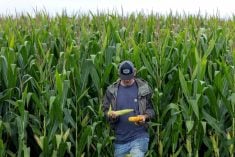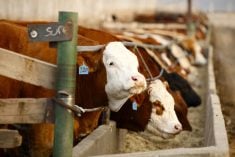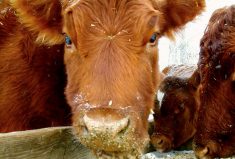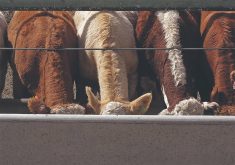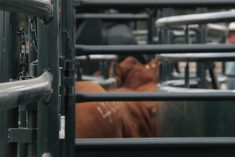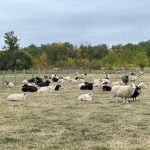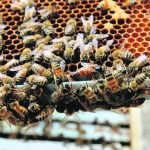Chicago | Reuters — The number of cattle placed in U.S. feedlots in December 2014 fell versus last year, a government report showed on Friday, but more than was expected, said analysts.
They said feedyards bought fewer calves for fattening, noting that expensive feed and pricey calves wore down margins.
Ranchers held back heifers to rebuild the U.S. cattle herd, now at a 63-year low after several years of drought hurt crops, analysts said.
The U.S. Department of Agriculture report showed December placements at 1.544 million head. It was down eight per cent from 1.679 million last year.
Read Also

U.S. grains: Soy futures post biggest monthly gain in nearly five years on China trade optimism
U.S. soybean futures climbed to a 15-month high and posted their biggest monthly gain in nearly five years on Friday following a rally fueled by the prospect of revived exports to China.
Analysts, on average, had expected a 4.1 per cent December placement decrease.
USDA put the feedlot cattle supply as of Jan. 1 at 10.690 million head, or up one per cent from 10.59 million a year ago. Analysts, on average, forecast an 1.6 per cent increase.
The government said the number of cattle sold to packers, or marketings, was down five per cent in December from a year ago, to 1.655 million head.
Analysts projected a drop of 4.9 per cent from 1.736 million last year because of one more day to market cattle last month than a year ago.
In December, ranchers placed more cattle than expected and the feedlot supply declined more than anticipated. Analysts said traders may view this as neutral to mildly bullish for Chicago Mercantile Exchange (CME) live cattle futures on Monday.
But the recent liquidation of positions by funds out of live cattle futures may continue to have more influence on the market than Friday’s cattle report, said Dan Vaught, an economist with Doane Advisory Services.
— Theopolis Waters reports on livestock futures markets for Reuters from Chicago.


